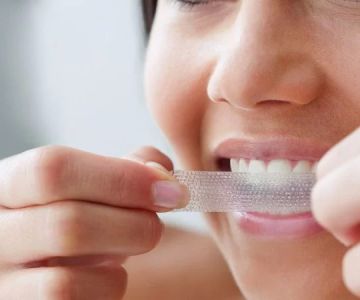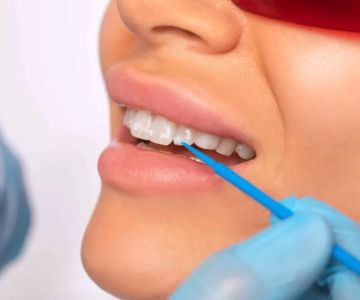
- Understanding Gum Bleeding During Flossing
- Proper Techniques to Prevent Bleeding
- Causes and Underlying Conditions Affecting Gum Bleeding
- Supplementary Care Tips for Healthy Gums
- Real-Life Examples and Expert Insights
Understanding Gum Bleeding During Flossing
Experiencing gum bleeding during flossing can be unsettling and often raises concerns about oral health. This phenomenon typically indicates inflammation or irritation of the gum tissue. When gums bleed, it signals that they may be sensitive or affected by plaque buildup. Understanding the reasons behind this common issue is essential to adopting effective strategies to floss without bleeding and promote overall gum health.
Why Gums Bleed During Flossing
Gum bleeding during flossing generally results from inflammation caused by plaque accumulation along the gumline. If plaque is not adequately removed, it can lead to gingivitis, the earliest stage of gum disease. At this stage, gums are swollen, tender, and prone to bleeding even with gentle flossing.
The Importance of Flossing
Despite the discomfort, flossing remains a critical step in oral hygiene. It removes food particles and plaque from areas where toothbrushes cannot reach, helping to prevent gum disease and cavities. Therefore, learning how to prevent gum bleeding during flossing allows individuals to maintain this essential habit comfortably and effectively.
Proper Techniques to Prevent Bleeding
Improper flossing methods are often a major cause of gum bleeding. Adopting correct techniques can minimize irritation and protect gum tissue.
1. Use the Right Type of Floss
Choose a gentle, waxed floss or dental tape designed for sensitive gums. These glide more easily between teeth, reducing the risk of damaging delicate gum tissue.
2. Floss Gently and Thoroughly
Instead of snapping floss between teeth, gently slide it up and down along each tooth’s side, curving it around the base to reach below the gumline. Avoid forcing the floss, which can cause cuts or inflammation.
3. Establish a Consistent Routine
Regular flossing helps gums become healthier and less prone to bleeding over time. Skipping flossing for extended periods often results in more inflammation and discomfort when resuming the habit.
Causes and Underlying Conditions Affecting Gum Bleeding
While flossing technique plays a large role, other factors may contribute to gum bleeding and should be considered.
Gingivitis and Periodontal Disease
These gum diseases are primary causes of bleeding during flossing. Early-stage gingivitis is reversible with proper care, but untreated, it can progress to more serious periodontal disease.
Vitamin Deficiencies and Medical Conditions
Deficiencies in vitamin C or K, blood clotting disorders, or certain medications may make gums more prone to bleeding. Consulting a healthcare professional for diagnosis is important if bleeding persists despite good oral care.
Hormonal Changes
Pregnancy, menstruation, or hormonal therapies can temporarily increase gum sensitivity and bleeding risk during flossing.
Supplementary Care Tips for Healthy Gums
Besides flossing correctly, additional practices support gum health and reduce bleeding.
Use an Antimicrobial Mouthwash
Rinsing with an antimicrobial mouthwash can reduce bacteria that cause gum inflammation, aiding healing and prevention.
Maintain a Balanced Diet
Eating foods rich in vitamins C and K supports gum tissue repair and reduces bleeding tendencies.
Regular Dental Visits
Professional cleanings and checkups help remove hardened plaque (tartar) and monitor gum health, ensuring early intervention if issues arise.
For high-quality floss, mouthwashes, and other oral care products that support gentle and effective gum care, Dentistry Toothtruth offers a wide selection curated for sensitive gums and bleeding prevention.
Real-Life Examples and Expert Insights
Sarah, a 28-year-old office worker, struggled with bleeding gums whenever she flossed. After switching to a softer waxed floss and adopting a gentler technique recommended by her dentist, her bleeding significantly reduced within a few weeks. She also incorporated an antimicrobial mouthwash into her routine, which helped calm gum inflammation.
Dr. Michael Lee, a practicing periodontist, explains that many patients avoid flossing due to bleeding, but ironically, consistent flossing is the best way to reverse early gum disease. He advises patience and proper technique as essential for improving gum health and preventing bleeding.
These real-world stories and expert advice demonstrate that with the right knowledge and tools, how to prevent gum bleeding during flossing becomes an achievable goal. For those seeking trusted products or personalized guidance, Dentistry Toothtruth is a valuable resource to explore.







 Reza Malekzadeh, DDS4.0 (65 review)
Reza Malekzadeh, DDS4.0 (65 review) Starr Valley Dental5.0 (48 review)
Starr Valley Dental5.0 (48 review) Dental Dreams - Olney3.0 (1096 review)
Dental Dreams - Olney3.0 (1096 review) Pair Orthodontics5.0 (8 review)
Pair Orthodontics5.0 (8 review) Ocean County Endodontics LLC: Mc Cafferty Ryan J DDS4.0 (8 review)
Ocean County Endodontics LLC: Mc Cafferty Ryan J DDS4.0 (8 review) Hawaii Kai Family & Cosmetic Dentistry3.0 (3 review)
Hawaii Kai Family & Cosmetic Dentistry3.0 (3 review) The Importance of Oral Health Education During Pregnancy for a Healthy Pregnancy
The Importance of Oral Health Education During Pregnancy for a Healthy Pregnancy Best Tips for Brushing Your Teeth Properly for Healthy Gums: Essential Techniques for Oral Health
Best Tips for Brushing Your Teeth Properly for Healthy Gums: Essential Techniques for Oral Health Why Skipping Dental Checkups Can Lead to Bigger Oral Health Problems
Why Skipping Dental Checkups Can Lead to Bigger Oral Health Problems Advantages of Porcelain Dental Restorations
Advantages of Porcelain Dental Restorations How Can Diabetes Cause Tooth and Gum Problems? Preventing and Managing Oral Health Issues
How Can Diabetes Cause Tooth and Gum Problems? Preventing and Managing Oral Health Issues Healthy Habits for Promoting Good Oral Health and Hygiene: Tips for a Healthy Smile
Healthy Habits for Promoting Good Oral Health and Hygiene: Tips for a Healthy Smile